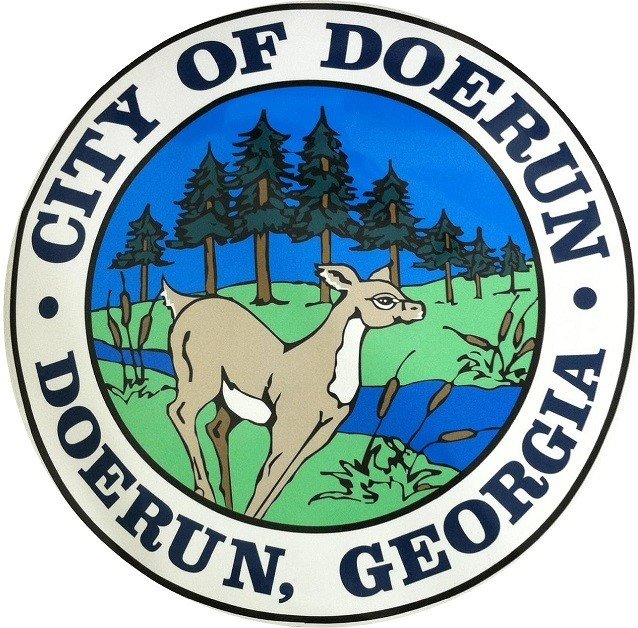EDDIE SEAGLE: Use drought tolerant plants to reduce irrigation needs
Published 8:30 am Wednesday, April 13, 2022

- Eddie Seagle is a Sustainability Verifier, Golf Environment Organization (Scotland), Agronomist and Horticulturalist, CSI: Seagle (Consulting Services International) LLC, Professor Emeritus and Honorary Alumnus (Abraham Baldwin Agricultural College), Distinguished Professor for Teaching and Learning (University System of Georgia) and Short Term Missionary (Heritage Church, Moultrie). Direct inquiries to csi_seagle@yahoo.com.
“The great gift of Easter is hope.” Basil Hume. “To a Christian, Easter Sunday means everything, when we celebrate the resurrection of Jesus Christ.” Bernhard Langer. “God is not interested in your art but, your heart.” Ifeanyi Enoch Onuoha. “By grace, we are saved through faith.” Kevin DeYoung. “The resurrection gives my life meaning and direction and the opportunity to start over no matter what my circumstances.” Robert Flatt. “People come together with their families to celebrate Easter. What better way to celebrate than to spend a few hours going on the journey of Christ’s life.” Roma Downey. “Easter is meant to be a symbol of hope, renewal, and new life.” Janine di Giovanni. “Christ the Lord is risen today, sons of men and angels say. Raise your joys and triumphs high; sing, ye heavens and earth reply.” Charles Wesley. “Easter is very important to me. It’s a second chance.” Reba McEntire.
Good Friday is approaching and Easter will follow. The days of April are passing right along. In the continuation of your landscaping efforts, make choices and decisions that further promote sustainability and environmental stewardship, as well as curb appeal. With sustainability comes drought tolerance. A plant is drought tolerant if it can survive a dry period of two to three months without supplemental irrigation.
Many of our native plants in regions experiencing such conditions are drought tolerant. To reduce the need for supplemental irrigation in your landscape, drought tolerant plants should be used. If you want to minimize long-term watering, be sure to use native or sustainable plants. Develop your landscape with drought tolerant plants!
Let’s take a look at the following drought tolerant plants by common and botanical names that can prove very useful in your landscape planning process. The botanical name eliminates any confusion that might be created by variations in common names between geographic regions or zones.
Annual plants and flowers exhibiting drought tolerance include orange cosmos (Cosmos sulphureus), moss rose (Portulaca grandiflora), zinnia (Zinnia elegans), and Mexican zinnia (Zinnia haageana).
Perennial plants with drought tolerance include iron plant (Aspidistra elatior), Madagascar periwinkle (Catharanthus roseus), oxeye sunflower (Heliopsis helianthoides), daffodils (Narcissus spp.), pink evening primrose (Oenothera speciosa), asparagus fern (Protosparagus densiflorus), Mexican petunia (Ruellia brittoniana), common goldenrod (Solidago odora), mountain marigold (Tagetes lemmonii), and Adam’s needle yucca (Yucca filamentosa).
Grasses and grass-like plants offering drought tolerance include pampas grass (Cortaderia selloana), Japanese blood grass (Imperata cylindrica), Mexican feather grass (Nassella tenuissima), switchgrass (Panicum virgatum), little bluestem (Schizachyrium scoparium), Indiangrass (Sorghastrum nutans), and sand cordgrass (Spartina bakeri).
Vines having drought tolerance include Mexican creeper (Antigonon leptopus), cross vine (Bignonia capreolata), violet trumpet vine (Clytostoma callistegioides), dodder (Cuscuta spp.), creeping fig (Ficus pumila), Carolina yellow jessamine (Gelsemium sempervirens), Japanese honeysuckle (Lonicera japonica), blue passionflower (Passiflora caerulea), Confederate jasmine (Trachelospermum jasminoides), and muscadine (Vitis rotundifolia).
Shrubs which are drought tolerant include Japanese aucuba (Aucuba japonica), butterfly bush (Buddleia davidii), American beautyberry (Callicarpa americana), sweetshrub (Calycanthus floridus), sasanqua camellia (Camellia sasanqua), Japanese quince (Chaenomeles speciosa), thorny elaeagnus (Elaeagnus pungens), blue huckleberry (Gavlussacia frondosa), confederate rose (Hibiscus mutabilis), Aaron’s beard (Hypericum calycinum), gallberry (Ilex glabra), Burford’s holly (Ilex cornuta ‘Burfordii’), yaupon holly (Ilex vomitoria), Nellie Stevens holly (Ilex x ‘Nellie R. Stevens’), shore juniper (Juniperus conferta), Parson’s juniper (Juniperus davurica ‘Parsonii’), creeping juniper (Juniperus horizontalis), lantana (Lantana spp.), golden vicary privet (Ligustrum x vicaryi), southern bayberry (Myrica cerifera), Oleander (Nerium oleander), Japanese mockorange (Pittosporum tobira), India hawthorn (Rhaphiolepis indica), veddo hawthorne (Rhaphiolepis umbellata), Knockout rose (Rosa x ‘Knockout’), Cherokee rose (Rosa laevigata), rosemary (Rosemarinus officinalis), Reeves’ spirea (Spiraea cantoniensis), yellow elder (Tecoma stans), mayberry (Vaccinium elliottii), shiny blueberry (Vaccinium myrsinites), deerberry (Vaccinium stamineum), rusty black-haw (Viburnum rufidulum), Spanish bayonet (Yucca aloifolia), spineless yucca (Yucca elephantipes), and Spanish dagger (Yucca gloriosa).
Trees which are drought tolerant include red maple (Acer rubrum), silk tree (Albizia julibrissin), Chinese chestnut (Castanea mollissima), southern catalpa (Catalpa bignonioides), deodar cedar (Cedrus deodara), hackberry (Celtis occidentalis), fringetree (Chionanthus virginicus), woody goldenrod (Chrysoma pauciflosculosa), camphor tree (Cinnamomum camphora), flowering dogwood (Cornus florida), smoketree (Cotinus coggygria), Leyland cypress (Cupressocyparis Leylandii), smooth cypress (Cupressus glabra), American persimmon (Diospyros virginiana), gingko (Gingko biloba), honeylocust (Gleditsia triacanthos), Kentucky coffee tree (Gymnocladus dioicus), American holly (Ilex opaca), crape myrtle (Lagerstroemia indica), southern magnolia (Magnolia grandiflora), Chinaberry (Melia azedarach), white mulberry (Morus alba), sourwood (Oxydendrum arboreum), shortleaf pine (Pinus echinata), slash pine (Pinus elliottii), longleaf pine (Pinus palustris), black pine (Pinus thunberall), scarlet oak (Quercus coccinea), southern red oak (Quercus falcata), sand live oak (Quercusgeminata), Shumard oak (Quercus shumardii), sassafras (Sassafras albidum), African tuliptree (Spathodea campanulata), bald cypress (Taxodium distichum), and chastetree Vitex negundo).
As you research plants that get your attention, keep such factors as seasonal color, texture, size at maturity (height and width), speed of growth, exposure to sun or shade, potential pests problems, deciduous or evergreen, cultural practices, and potential invasiveness in mind. Some of these plants may have invasive characteristics, but were listed because they were found in the area. Continue to think in terms of native and sustainable plants in the landscape rather than those with invasive characteristics.
Happy Easter! He is risen!
“For God so loved the world that He gave His one and only Son, that whoever believes in Him shall not perish but have eternal life.” John 3:16. “I am the resurrection and the life.” John 11:25. “In His great mercy He has given us new birth into a living hope through the resurrection of Jesus Christ from the dead.” 1 Peter 1:3. “Therefore, if anyone is in Christ, the new creation has come: The old has gone, the new is here!” 2 Corinthians 5:17. “I have been crucified with Christ and I no longer live, but Christ lives in me. The life I live in the body, I live by faith in the Son of God, who loved me and gave Himself for me.” Galatians 2:20. “He is not here; for He is risen …” Matthew 28:6.
Eddie Seagle is a Sustainability Verifier, Golf Environment Organization (Scotland), Agronomist and Horticulturalist, CSI: Seagle (Consulting Services International) LLC, Professor Emeritus and Honorary Alumnus (Abraham Baldwin Agricultural College), Distinguished Professor for Teaching and Learning (University System of Georgia) and Short Term Missionary (Heritage Church, Moultrie). Direct inquiries to csi_seagle@yahoo.com.





